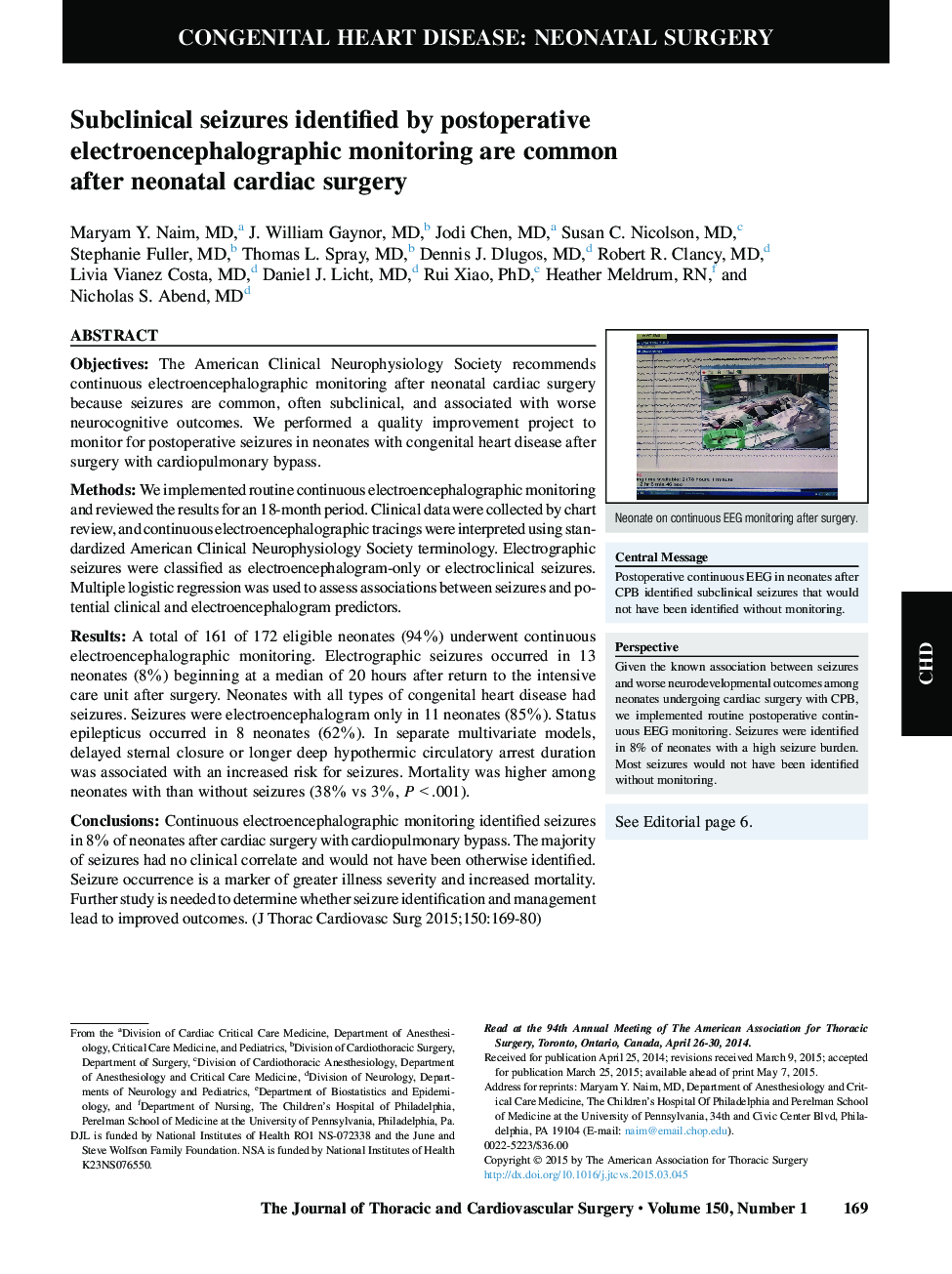| Article ID | Journal | Published Year | Pages | File Type |
|---|---|---|---|---|
| 2979160 | The Journal of Thoracic and Cardiovascular Surgery | 2015 | 12 Pages |
ObjectivesThe American Clinical Neurophysiology Society recommends continuous electroencephalographic monitoring after neonatal cardiac surgery because seizures are common, often subclinical, and associated with worse neurocognitive outcomes. We performed a quality improvement project to monitor for postoperative seizures in neonates with congenital heart disease after surgery with cardiopulmonary bypass.MethodsWe implemented routine continuous electroencephalographic monitoring and reviewed the results for an 18-month period. Clinical data were collected by chart review, and continuous electroencephalographic tracings were interpreted using standardized American Clinical Neurophysiology Society terminology. Electrographic seizures were classified as electroencephalogram-only or electroclinical seizures. Multiple logistic regression was used to assess associations between seizures and potential clinical and electroencephalogram predictors.ResultsA total of 161 of 172 eligible neonates (94%) underwent continuous electroencephalographic monitoring. Electrographic seizures occurred in 13 neonates (8%) beginning at a median of 20 hours after return to the intensive care unit after surgery. Neonates with all types of congenital heart disease had seizures. Seizures were electroencephalogram only in 11 neonates (85%). Status epilepticus occurred in 8 neonates (62%). In separate multivariate models, delayed sternal closure or longer deep hypothermic circulatory arrest duration was associated with an increased risk for seizures. Mortality was higher among neonates with than without seizures (38% vs 3%, P < .001).ConclusionsContinuous electroencephalographic monitoring identified seizures in 8% of neonates after cardiac surgery with cardiopulmonary bypass. The majority of seizures had no clinical correlate and would not have been otherwise identified. Seizure occurrence is a marker of greater illness severity and increased mortality. Further study is needed to determine whether seizure identification and management lead to improved outcomes.
